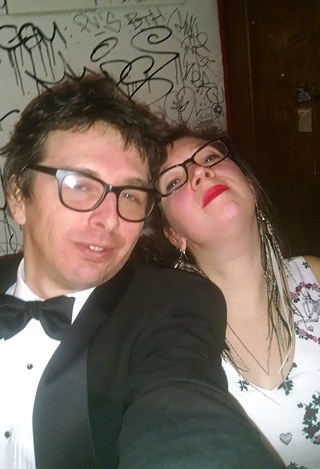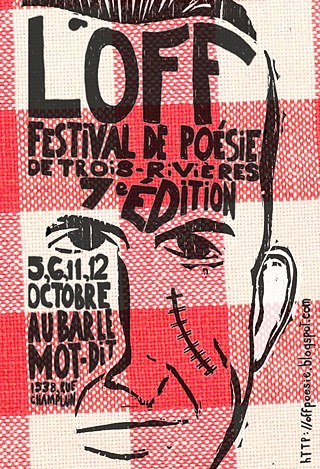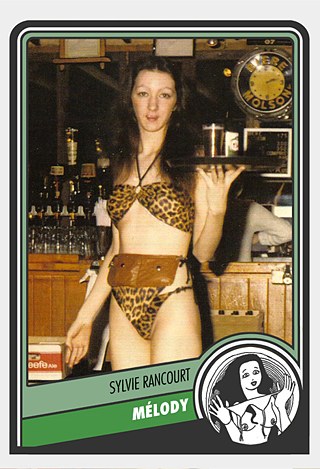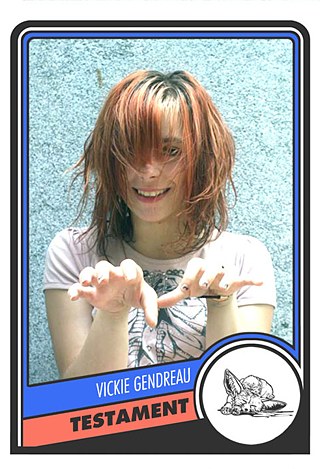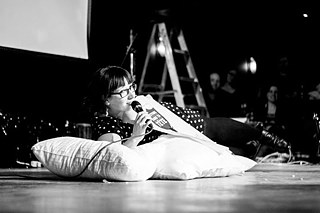An other literature
An Other Literary Life: The Public Reading Scene

To understand literary life in Quebec today, it is important to understand the central role played by public reading nights in recent history. In fact, such events have been held almost continuously for over 50 years.
They were part of the nationalist movement in the 60s, the counterculture of the 70s, the marginal scene of the 80s, and were included in the programming of literary festivals in the 90s and 00s. Today, public readings are in the same category as the independent zine and micropublishing scene, which dominates present-day cultural life. Nearly every author who does public readings can boast self-published collections or a book published by a micropublisher. Self-financed by independent producers and organized for the most part as free events in bars, these readings host published authors, new authors, poets, novelists and poet-performers.
This scene has grown in importance in recent years, mostly because of the failure of the commercial distribution network for works of fiction. In fact, in the space of a few years, most of the country’s major daily newspapers stopped covering literary news. At the same time, faced with financial hardships, bookstore chains prioritized international best-sellers over local productions. This was accompanied by a stagnation in public subsidies given to major literary events that promoted this category of local fiction writers, formerly so prized by the media. The public reading scene has derived some benefit from this debacle, to the extent that it does not depend on the general public and has managed to use social media to structure this literary community that it brings together.
Aesthetics of Another Kind
The public reading scene has also made it possible to offer a diversity of aesthetics. No longer tied to the formal, very conventional requirements of the general public, authors taking part in this scene have experimented a bit more with forms and tones long ago removed from the realistic canon of fiction for the general public. Compared to the commercial distribution network, this scene allows authors to disseminate their texts outside media and institutional networks.Lastly, it allows authors to listen to texts written by their peers and share influences; it also ensures that trends can emerge in close contact with the most current sensibilities. And since this scene has existed continuously since the 60s, it is able to tap into a poetic tradition of its own. The way to handle contemporary topics is through rhythm and humour—a type of craftsmanship that borrows very little from French poetry or American literature or from film or music in general. This descendancy relationship gives it a uniqueness that could be likened to American hip-hop.
From Off Festivals to the Académie de la Vie Littéraire
Today’s literary scene was gradually assembled from several hubs of creation that left their marks to varying degrees. The Off festival de poésie de Trois-Rivières is one example. It was created in a very primitive form in 2007 by Erika Soucy and Alexandre Gauthier to challenge the little space given to poets under the age of 30 within the official festival. Also established in 2006, Les Productions Arreuh first organized informal readings in Montreal parks before founding “Dans ta tête,” a festival format produced by Catherine Cormier-Larose that is still active today. Several poetry cabarets have existed since the end of the 90s, including those organized by Les Éditions Rodrigol or Le Cabaret de la Pègre. A network connecting these communities gradually developed and came to include small and medium-size publishing houses such as Le Quartanier, L'Oie de Cravan and Poètes de Brousse.My personal contribution to this scene involved the creation of the Académie de la Vie Littéraire, an independent, non-subsidized organization that presents awards every year to some fifteen authors who, according to our motto, "have few chances of winning elsewhere.” After initially creating this as a joke on my personal blog, I quickly realized that the Académie de la Vie Littéraire met a need specific to this scene: that of producing a sort of yearly summary of emerging trends and faces. In the second year, I organized an awards night with Catherine Cormier-Larose—to be honest, it was a public reading disguised as an awards night—which was then enhanced by the production of “author cards” modelled after collectible hockey cards, an integral part of popular culture in Quebec. The awards night gained momentum from year to year and is considered a must-attend event in today’s literary scene.
Fighting the Fear of Nothingness
The public reading scene might well be likened to an underground movement, but this would trivialize its importance in recent cultural history as a much-needed regime change. In fact, it didn’t emerge in complete opposition to an oppressive cultural hegemony. Instead, it grew out of the cracks in a cultural production and distribution system that was in decline. The enthusiasm of the organizers and poets who keep the public reading scene alive probably comes less from a desire to express themselves and be recognized as artists and more from a deep-seated concern that if nothing is organized, nothing will happen.This state of mind is a good representation, though on a smaller scale, of Quebec today: in the absence of a shared political project, and faced with a globalized culture that is inescapably eating away at the resources that had long kept alive the hope of the sustainability of this isolated French-language culture in the midst of an English-speaking continent, the feeling of inheriting personal responsibility towards this culture is strong enough to single-handedly maintain something—a small territory, a short evening, a modest text—even if it’s done at a financial loss.


